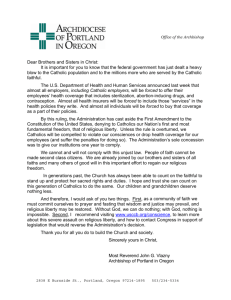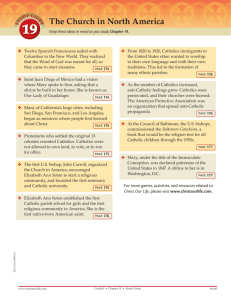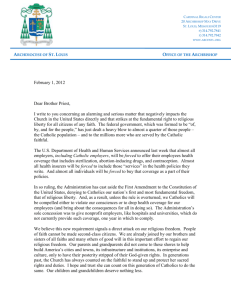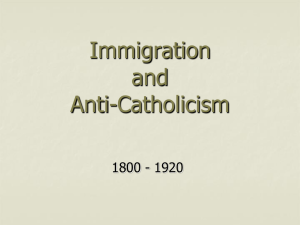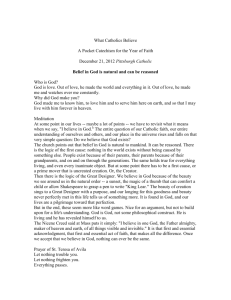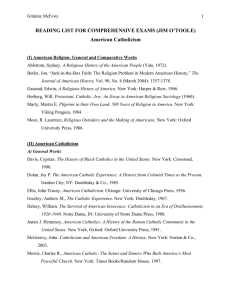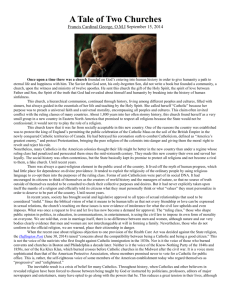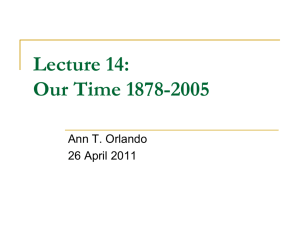Catholic Immigrant Experiences in 19th Century America Objective
advertisement
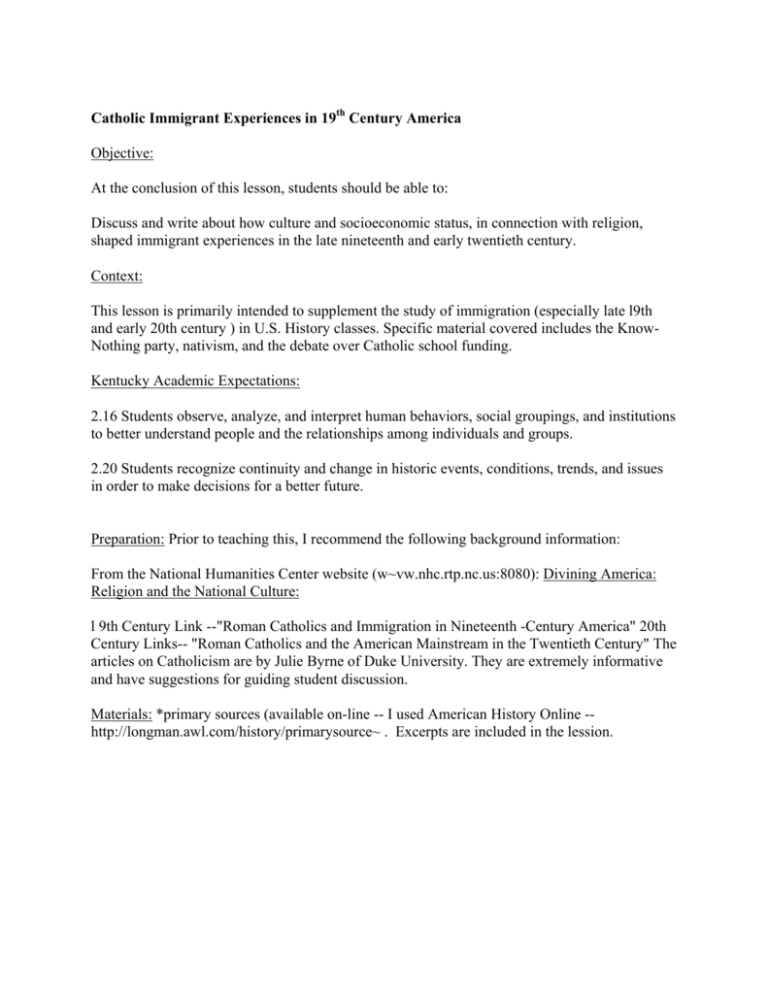
Catholic Immigrant Experiences in 19th Century America Objective: At the conclusion of this lesson, students should be able to: Discuss and write about how culture and socioeconomic status, in connection with religion, shaped immigrant experiences in the late nineteenth and early twentieth century. Context: This lesson is primarily intended to supplement the study of immigration (especially late l9th and early 20th century ) in U.S. History classes. Specific material covered includes the KnowNothing party, nativism, and the debate over Catholic school funding. Kentucky Academic Expectations: 2.16 Students observe, analyze, and interpret human behaviors, social groupings, and institutions to better understand people and the relationships among individuals and groups. 2.20 Students recognize continuity and change in historic events, conditions, trends, and issues in order to make decisions for a better future. Preparation: Prior to teaching this, I recommend the following background information: From the National Humanities Center website (w~vw.nhc.rtp.nc.us:8080): Divining America: Religion and the National Culture: l 9th Century Link --"Roman Catholics and Immigration in Nineteenth -Century America" 20th Century Links-- "Roman Catholics and the American Mainstream in the Twentieth Century" The articles on Catholicism are by Julie Byrne of Duke University. They are extremely informative and have suggestions for guiding student discussion. Materials: *primary sources (available on-line -- I used American History Online -http://longman.awl.com/history/primarysource~ . Excerpts are included in the lession. Procedures: 1. Anticipatory set: (Bell ringer) In small groups (3 or 4), have groups read "The Secret Oath of the American Protective Association" and one of the questions listed below -- assign one question to each group? 2. After 1-2 minutes, have one member of the group share answers and discuss. Ask students what the reference to the Pope in the last sentence means. (Many Americans felt that loyalty to the Pope would outweigh the immigrant's loyalty to the American government.) 3. Give students a mini lecture or refresher on the "Know Nothing" Party (see notes) and nativist movement of the 1 840's. 4. Again in groups, have student's read "Examiner's Questions for Admittance to the American (or Know-Nothing) Party, July 1854." Have each group discuss the following questions: Why did many activists feel that Catholics in particular threatened American traditions? How is this similar to what you read about the American Protective Association? (Point out that in both cases political power is at stake, not religious conflict.) Give students 2-3 minutes to discuss, then share answers. (For preparation refer to section on "guiding student discussion" in Byrne's article on nineteenth century Catholic immigration. ) 5. Point out reference to the "increasing role played by Catholics in education" and share information about the debate over use of the King James version of the Bible in public schools. (See notes.) Explain how the issue also addressed school funding. 6. Ask students in groups to discuss relationship to modern school voucher debate. What light does this historical information shed on the current controversy ? Share answers. Assessment: Have students write a brief feature article (or editorial) describing the historical connection between school funding and religious education. There are several potential follow up activities for this lesson, including: 1. Have students read "In the City of Brotherly Love" (Teaching Tolerance). This story deals with nativist reactions to Catholic schooling requests in Philadelphia in the 1840’s. Teaching Tolerance materials are available free of charge from the Southern Poverty Law Center, 2. Read "Lee Chew, Life of a Chinese Immigrant." (primary source -- also available from American History Online.) How are his experiences similar to those of Jewish and Catholic immigrants? How are they different? 3. Watch all or portions of Far and Away (1992). The film shows discrimination experienced by Irish Americans in 1890’s Boston. 4. Compare the election of 1928 and 1960. How did the American public and press react to the Catholicism of Al Smith and John F. Kennedy? (In both cases, intense debate centered on the issue of potential papal involvement in U.S. affairs.)
